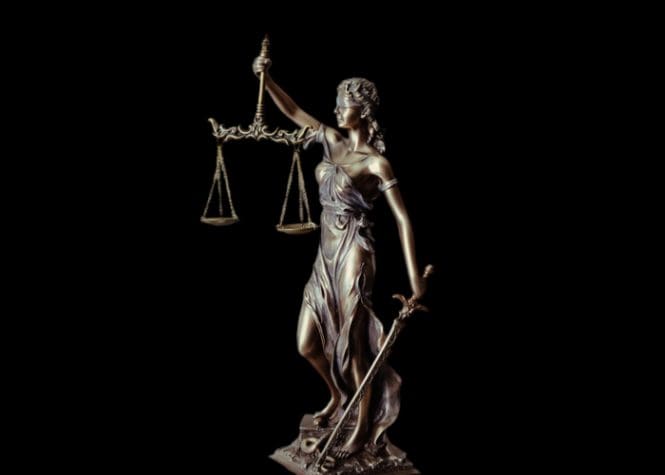Reprinted by permission of author Marci A. Hamilton, Esq. Original here.
This month, the dioceses of Albany and Oakland publicly acknowledged that they may soon file for bankruptcy protection. Last month, the diocese of Santa Rosa, California, actually took that step. A total of 31 Catholic entities are in or have sought Chapter 11 proceedings. Other large, popular, and powerful groups have done likewise, notably the Boys Scouts of America and USA Gymnastics.
It is a truism to say that the powerful and wealthy are able to carve out legal strategies to benefit themselves. It is a cruel irony, though, that Chapter 11 in the Bankruptcy Code perversely caters to the institutions that created the conditions for child sex abuse while it sidelines the victims.
Chapter 11 was designed for “honest debtors” to reorganize their businesses so they could leave their debts behind and successfully carry on. It is triage for the poor debtor, who is the “victim” in the bankruptcy process needing a federal bankruptcy judge to guide them to a safe landing. At the same time, it is torture for the child sex abuse victims who have bravely come forward. Once the institution that destroyed their life is safely ensconced in the bankruptcy system, they are told to sit in the back of the courtroom. For their patience, they receive justice, light and pennies on the dollar for the harm inflicted on them by the debtor.
The perverseness of the system quickly asserts itself the day the bankruptcy is announced. Trusted institutions like the dioceses say they are being “forced into bankruptcy,” which the public assumes means that they have run out of assets. While the bishops posture as the victim, they sideline the real victims. Truth be told, if they were broke, they would have filed under Chapter 7 for dissolution.
It is the operation of Chapter 11 that works out so well for the bad actors. First, the court will set a “bar date,” which forces any victim hoping to get any justice from the entity that caused their trauma to jump by that certain date, whether ready or not. On average, child sex abuse victims come forward in adulthood, around age 50. A third never do. The bar date sickeningly tells the traumatized—wherever they are in their healing process—to dive into a system that will treat them as “creditors” and re-traumatize them. For the debtor, the bar date is a beautiful thing.
They get to flush out a large percentage of their victims at once –whether the victim is ready or not—so they can have a clean slate before they ride into the sunset. Filing even two weeks after the bar date closes can block the victim from any meaningful damages, as gymnast Terin Humphrey learned during the USA Gymnastics bankruptcy.
The next bonus for the debtors is the automatic stay provision, which halts ongoing litigation against the debtor and even related entities. Victims’ civil lawsuits are the only way they can learn the facts regarding the system that set them up and the individual bad actors in their story; they seek discovery to piece together what happened to them as a child. Victims crave this aspect of these cases, but Chapter 11 gives the debtor the benefit of stopping all litigation, so any discovery not already gathered at filing is left locked in the dioceses’ secret archives and the Boy Scouts’ records and memories. This harms parents, who don’t learn what they need to understand to protect their children, and the public, which needs to understand the prevalence of child sex abuse and the operation of trusted institutions that harm children. In contrast, it lets the debtors keep their secrets and hide the truth from the public. Non-consensual third-party releases in the child sex abuse cases are contrary to justice and block the education we all need about trusted institutions destroying the lives of children.
Another power move by the debtors that is built into the system is that they have been allowed to cloak their related organizations with debtor-like protection by obtaining third-party releases. The best example is the Boy Scouts bankruptcy where the national organization filed under Chapter 11 and then insisted that its local, land-rich councils also be brought under the debtors’ umbrella. The victims then could not litigate against the local councils, which have many of the facts they need to prove their cases. The automatic stay provisions disserve public policy in the child sex abuse Chapter 11 filings: they halt discovery and, therefore, permit the offending organizations to avoid revealing the truth about their role in the abuse of the Plaintiff victim. Just as important, they keep the truth from the public that needs to understand the bad actor organizations to protect our children.
The system also needs to become explicitly and publicly victim-centered. Every victim deserves the right to deliver a victim impact statement in court before the plan is approved.
Federal bankruptcy law was not designed for child sex abuse victims, to put it mildly. Currently there is an exception for treatment of asbestos cases. It is time Chapter 11 was amended with an exception for child sex abuse cases that levels the playing field, improves the treatment of the victims in the legal process, and facilitates public access to the secrets that led these organizations to endanger children. In these cases, Chapter 11 cannot be just about an “honest debtor” trying to reorganize and move forward. The focus on the future well-being of the debtor in these cases, frankly, is obscene when the victims are nothing other than side-lined “creditors.” It’s time for Congress to amend Chapter 11 so it will serve the larger public interest.


Leave a Reply